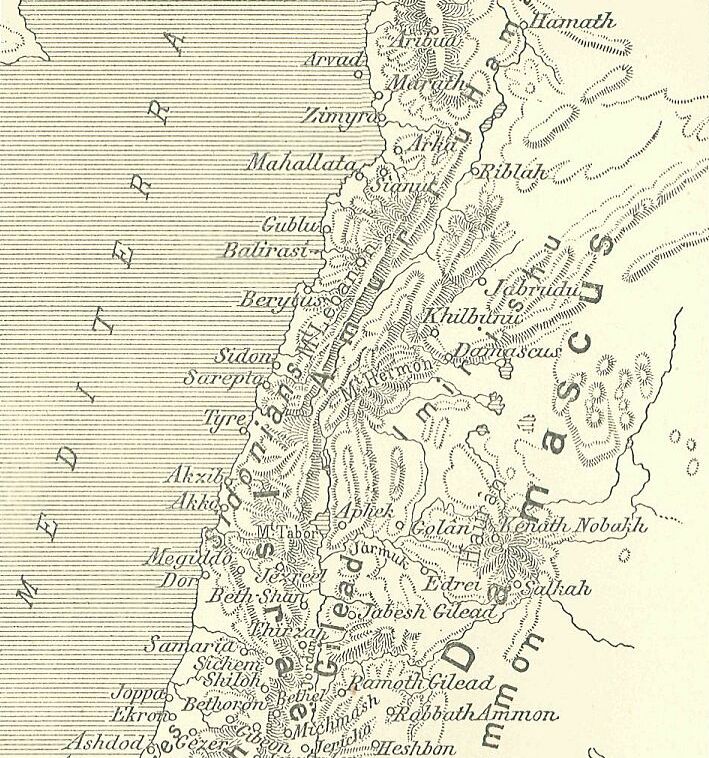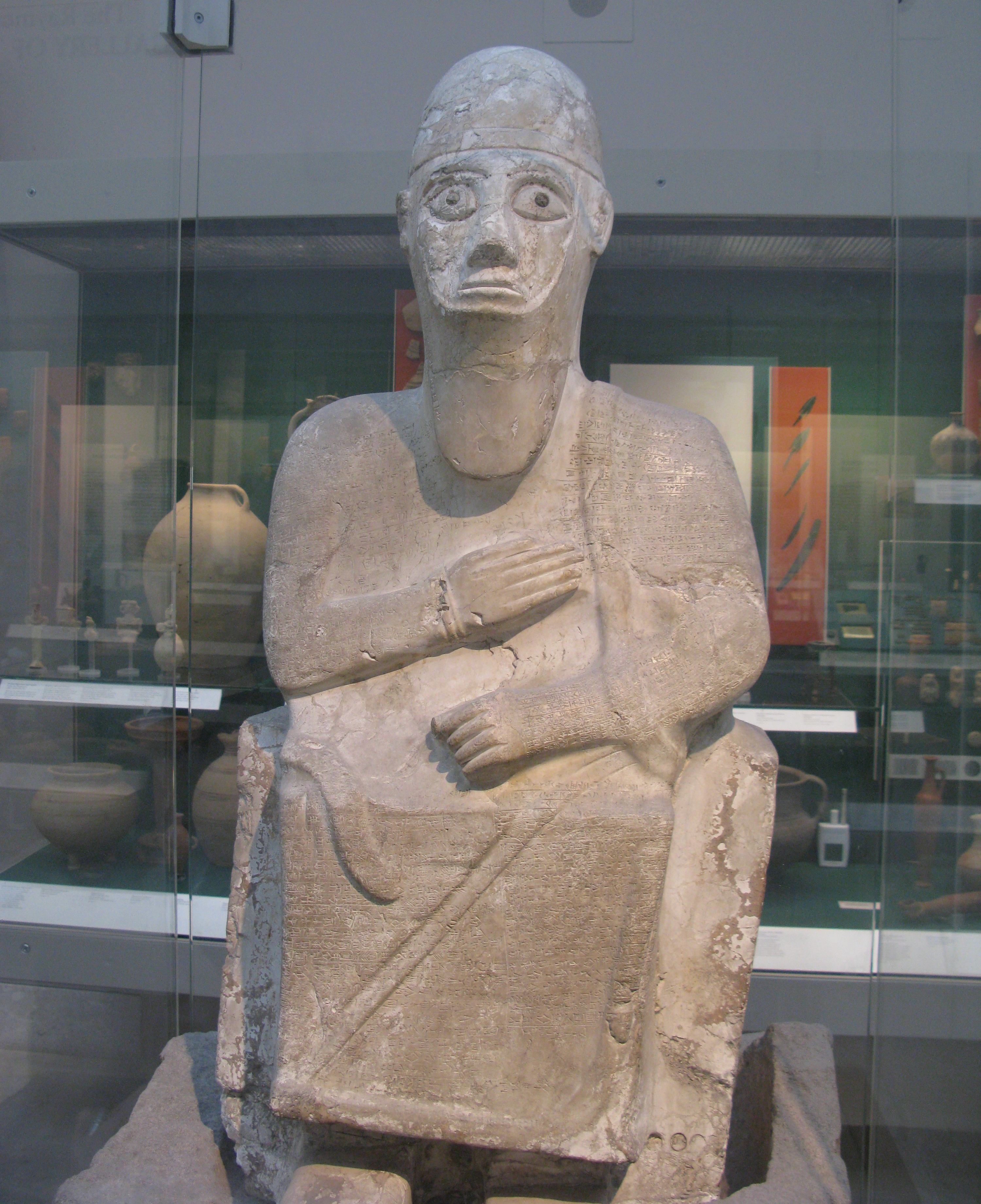|
Amarna Letter EA 100
Amarna letter EA 100, titled: ''"The City of Irqata to the King"'' Moran, William L. 1987, 1992. ''The Amarna Letters.'' EA 100, ''"The City of Irqata to the King"'', pp. 172-173. is a short-, to moderate-length clay tablet Amarna letter from the city-state of Irqata, (modern Arqa), written to the Pharaoh of Egypt. Only one other city sent a clay tablet Amarna letter to the Pharaoh, namely Tunip, letter EA 59, titled: ''"From the Citizens of Tunip"''. The letter concerns the "watch-guarding" of Irqata, regional warfare (with the Habiru/'Apiru), and the city's continued protection, and loyalty to the Egyptian Pharaoh. The letter implies their loyalty, their constant vigilance, and need for assistance from the Pharaoh, either implied by troop needs, or at least awareness from the Pharaoh, of their needs. EA 100 is located at the British Museum, no 29825. Tablet letter EA 100 can be viewed here: Obverse Reverse The letter EA 100: ''"The City of Irqata to the King"'' EA 100, ... [...More Info...] [...Related Items...] OR: [Wikipedia] [Google] [Baidu] |
Ayyab Letter Mp3h8880
Ayyab was a ruler of Aštartu (present day Tell Ashtara) south of Damascus. According to the Amarna letters, cities/city-states and their kings in the region — just like countries to the north, such as Hatti of the Hittites, fell prey to a wave of attacks by Habiru raiders. The Amarna correspondence corpus covers a period from 1350– 1335 BC. Another ruler of Aštartu cited in the Amarna letters is Biridašwa. The letters do not clearly indicate their title, leading some scholars to describe them as kings of Damascus (Dimašqu) while others believe they were high Egyptian officials, possibly mayors.Wayne Thomas Pitard''Ancient Damascus: A Historical Study of the Syrian City-State from Earliest Times Until Its Fall to the Assyrians in 732 B.C.E.''Eisenbrauns, 1987. p. 67. Ayyab's letter EA 364 Ayyab is the author of only one letter to the Egyptian pharaoh, letter EA 364-( EA for 'el Amarna'). Title: ''Justified war'' :To the king, my lord: Message of ''Ayyab'', your servant. ... [...More Info...] [...Related Items...] OR: [Wikipedia] [Google] [Baidu] |
Ba (cuneiform)
The cuneiform sign ba, is a common-use sign of the Amarna letters, the ''Epic of Gilgamesh,'' and other cuneiform texts (for example Hittite texts). Linguistically, it has the alphabetical usage in texts for ''b'', ''a'', or syllabically for ''ba'', and also a replacement for ''"b"'', by ''"p"''. The a is replaceable in word formation by any of the 4 vowels: ''a, e, i,'' or ''u''. ''Epic of Gilgamesh'' usage The ''ba'' sign usage in the ''Epic of Gilgamesh'' is as follows: ''ba''-(282 times); ''BA''-(7). References * Moran, William L. 1987, 1992. ''The Amarna Letters.'' Johns Hopkins University Press, 1987, 1992. 393 pages.(softcover, ) * Parpola, 1971. ''The Standard Babylonian Epic of Gilgamesh'', Parpola, Simo, Neo-Assyrian Text Corpus Project, c 1997, Tablet I thru Tablet XII, Index of Names, Sign List, and Glossary-(pp. 119–145), 165 pages. ---- Image:Amarna_letter-_Royal_Letter_from_Ashur-uballit,_the_king_of_Assyria,_to_the_king_of_Egypt_M ... [...More Info...] [...Related Items...] OR: [Wikipedia] [Google] [Baidu] |
Amarna Letter EA 286
Amarna letter EA 286, titled: ''"A Throne Granted, Not Inherited,"'' Moran, William L. 1987, 1992. ''The Amarna Letters.'' EA 286, ''A Throne Granted, Not Inherited'', pp. 326-327. is a tall, finely-inscribed clay tablet letter, approximately 8 in tall, and 3.5 in wide, from Abdi-Heba the mayor/ruler of Jerusalem, of the mid 14th century BC Amarna letters. The scribe of his six letters to Egypt were penned by the "Jerusalem scribe"; EA 286 is a moderately long, and involved letter. Unlike similar length letters by the Jerusalem scribe, namely EA 287, EA 288, and shorter EA 289, EA 286 is damaged over the entire surface by erosion, probably from moisture. Other small sections of the clay tablet letter are missing entirely, with text supplied by the story's context. The Amarna letters, about 300, numbered up to EA 382, are a mid 14th century BC, about 1350 BC and 20–25 years later, correspondence. The initial corpus of letters were found at Akhenaten's city Akhetaten, in the ... [...More Info...] [...Related Items...] OR: [Wikipedia] [Google] [Baidu] |
Jerusalem
Jerusalem (; he, יְרוּשָׁלַיִם ; ar, القُدس ) (combining the Biblical and common usage Arabic names); grc, Ἱερουσαλήμ/Ἰεροσόλυμα, Hierousalḗm/Hierosóluma; hy, Երուսաղեմ, Erusałēm. is a city in Western Asia. Situated on a plateau in the Judaean Mountains between the Mediterranean Sea, Mediterranean and the Dead Sea, it is one of the List of oldest continuously inhabited cities, oldest cities in the world and is considered to be a holy city for the three major Abrahamic religions: Judaism, Christianity, and Islam. Both Israelis and Palestinians claim Jerusalem as their Capital city, capital, as Israel maintains its primary governmental institutions there and the State of Palestine ultimately foresees it as its seat of power. Because of this dispute, Status of Jerusalem, neither claim is widely recognized internationally. Throughout History of Jerusalem, its long history, Jerusalem has been destroyed at least twice, Sie ... [...More Info...] [...Related Items...] OR: [Wikipedia] [Google] [Baidu] |
Abdi-Heba
Abdi-Heba (Abdi-Kheba, Abdi-Hepat, or Abdi-Hebat) was a local chieftain of Jerusalem during the Amarna period (mid-1330s BC). Abdi-Heba's name can be translated as "servant of Hebat", a Hurrian goddess. Whether Abdi-Heba was himself of Hurrian descent is unknown, as is the relationship between the general populace of pre-Israelite Jerusalem (called Jebusites in the Bible) and the Hurrians. Egyptian documents have him deny he was a mayor (''ḫazānu'') and assert he is a soldier (''we'w''), the implication being he was the son of a local chief sent to Egypt to receive military training there. Also unknown is whether he was part of a dynasty that governed Jerusalem or whether he was put on the throne by the Egyptians. Abdi-Heba himself notes that he holds his position not through his parental lineage but by the grace of Pharaoh, but this might be flattery rather than an accurate representation of the situation. At this time the area he administered from his garrison may have had ... [...More Info...] [...Related Items...] OR: [Wikipedia] [Google] [Baidu] |
Shechem
Shechem ( ), also spelled Sichem ( ; he, שְׁכֶם, ''Šəḵem''; ; grc, Συχέμ, Sykhém; Samaritan Hebrew: , ), was a Canaanite and Israelite city mentioned in the Amarna Letters, later appearing in the Hebrew Bible as the first capital of the Kingdom of Israel following the split of the United Monarchy. According to , it was located in the tribal territorial allotment of the tribe of Ephraim. Shechem declined after the fall of the northern Kingdom of Israel. The city later regained its importance as a prominent Samaritan center during the Hellenistic period. Traditionally associated with the city of Nablus, Shechem is now identified with the nearby site of Tell Balata in the Balata al-Balad suburb of the West Bank. Geographical position Shechem's position is indicated in the Hebrew Bible: it lay north of Bethel and Shiloh, on the high road going from Jerusalem to the northern districts (Judges xxi, 19), at a short distance from Michmethath (Joshua 17:7) and o ... [...More Info...] [...Related Items...] OR: [Wikipedia] [Google] [Baidu] |
Labaya
Labaya (also transliterated as Labayu or Lib'ayu) was a 14th-century BCE ruler or warlord in the central hill country of southern Canaan. He lived contemporaneously with Pharaoh Akhenaten. Labaya is mentioned in several of the Amarna Letters (abbreviated "EA", for 'el Amarna'). He is the author of letters EA 252– 54. Labaya was active over the whole length of Samaria and slightly beyond, as he gave land to Habiru in the vicinity of Šakmu (Shechem) and he and his sons threatened such powerful towns as Jerusalem and Gazru (Gezer) to the south, and Megiddo to the north. Career The Amarna letters give an incomplete look at Labaya's career. In the first of Labaya's letters thus far discovered (EA 252), he defends himself to the Pharaoh against complaints of other city rulers about him, for example, the complaint that he has hired mercenaries from among the Habiru. Labaya further admitted to having invaded Gezer and insulting its king Milkilu. He denied any knowledge of his s ... [...More Info...] [...Related Items...] OR: [Wikipedia] [Google] [Baidu] |
Habiru
Habiru (sometimes written as Hapiru, and more accurately as ʿApiru, meaning "dusty, dirty"; Sumerian: 𒊓𒄤, ''sagaz''; Akkadian: 𒄩𒁉𒊒, ''ḫabiru'' or ''ʿaperu'') is a term used in 2nd-millennium BCE texts throughout the Fertile Crescent for people variously described as rebels, outlaws, raiders, mercenaries, bowmen, servants, slaves, and laborers. Hapiru, Habiru, and Apiru In the time of Rim-Sin I (1822 BCE to 1763 BCE), the Sumerians knew a group of Aramaean nomads living in southern Mesopotamia as SA.GAZ, which meant "robbers". The later Akkadians inherited the term, which was rendered in their phonetic system as ''Habiru'', more properly ''ʿApiru''. The term occurs in hundreds of 2nd millennium BCE documents covering a 600-year period from the 18th to the 12th centuries BCE and found at sites ranging from Egypt, Canaan and Syria, to Nuzi (near Kirkuk in northern Iraq) and Anatolia (Turkey). Not all Habiru were murderers and robbers: in the 18th century B ... [...More Info...] [...Related Items...] OR: [Wikipedia] [Google] [Baidu] |
Lacuna (manuscripts)
A lacuna ( lacunae or lacunas) is a gap in a manuscript, inscription, text, painting, or musical work. A manuscript, text, or section suffering from gaps is said to be "lacunose" or "lacunulose". Weathering, decay, and other damage to old manuscripts or inscriptions are often responsible for lacunae - words, sentences, or whole passages that are missing or illegible. Palimpsests are particularly vulnerable. To reconstruct the original text, the context must be considered. In papyrology and textual criticism, this may lead to competing reconstructions and interpretations. Published texts that contain lacunae often mark the section where text is missing with a bracketed ellipsis. For example, "This sentence contains 20 words, and ..nouns," or, "Finally, the army arrived at ..and made camp." Notable examples See also * Unfinished work Unfinished may refer to: *Unfinished creative work, a work which a creator either chose not to finish or was prevented from finishing. ... [...More Info...] [...Related Items...] OR: [Wikipedia] [Google] [Baidu] |
Hapiru
Habiru (sometimes written as Hapiru, and more accurately as ʿApiru, meaning "dusty, dirty"; Sumerian: 𒊓𒄤, ''sagaz''; Akkadian: 𒄩𒁉𒊒, ''ḫabiru'' or ''ʿaperu'') is a term used in 2nd-millennium BCE texts throughout the Fertile Crescent for people variously described as rebels, outlaws, raiders, mercenaries, bowmen, servants, slaves, and laborers. Hapiru, Habiru, and Apiru In the time of Rim-Sin I (1822 BCE to 1763 BCE), the Sumerians knew a group of Aramaean nomads living in southern Mesopotamia as SA.GAZ, which meant "robbers". The later Akkadians inherited the term, which was rendered in their phonetic system as ''Habiru'', more properly ''ʿApiru''. The term occurs in hundreds of 2nd millennium BCE documents covering a 600-year period from the 18th to the 12th centuries BCE and found at sites ranging from Egypt, Canaan and Syria, to Nuzi (near Kirkuk in northern Iraq) and Anatolia (Turkey). Not all Habiru were murderers and robbers: in the 18th century ... [...More Info...] [...Related Items...] OR: [Wikipedia] [Google] [Baidu] |




.jpg)


